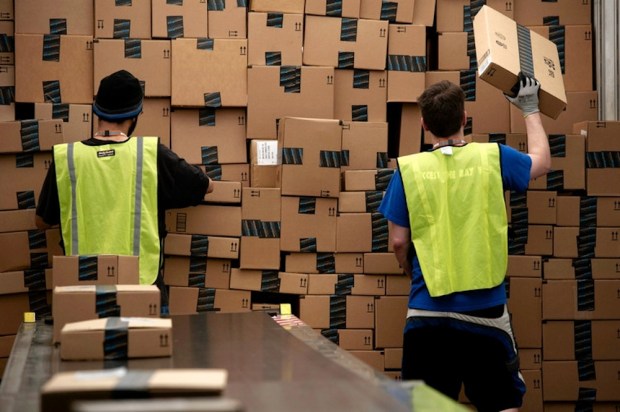Amazon Takes Tough Stance On Returns

Remember that old saying, “You break it, you bought it?” A tweak on that might read: “You click on it, you bought it.”
Or, in simpler language: “That’s enough.” So says Amazon, it seems, when it comes to returning items bought from the site.
The premise breaks down to this: Too many returns and you don’t return.
The Wall Street Journal reported that Amazon has been banning shoppers for what the financial publication notes are “infractions such as returning too many items, sometimes without telling them what they did wrong.”
That might push against the image of the eCommerce juggernaut as a conduit to returning goods with ease and speed. And as the WSJ noted, “lax return policies” have led to consumers expecting similar return policies from retailing peers, no matter whether they are physical (read: brick-and-mortar) or digital locations. In response, some firms have revamped their own return policies: At Nordstrom’s, no receipt is necessary, and at Ikea, a consumer has up to a year to give something back, as noted by retailcustomerexperience.com. The eCommerce return rate is high, at 20 percent versus 9 percent for brick-and-mortar firms. The holidays can expand those rates to as much as half of items bought, Shopify said at the end of last year, with statistics gleaned from Forrester.
Yet Amazon is now making it relatively harder for returns to take place. In one instance noted by the WSJ, a user got an email from Amazon stating that his account had been closed, and he’d been forbidden from opening a new one, upon violating Amazon’s use and conditions terms. That user, based in Israel, had a gift card balance which was rendered useless. He had returned a total of five items over the course of 2017 into 2018. Eventually, however, his account was reinstated.
And yet, noted the WSJ, as per an Amazon spokesman, the practice remains intact (if perhaps less than well-defined).
The fallout has spread across social media, as Amazon consumers have said their accounts had been closed without reasons offered by the company — other than it has “sole discretion” over who gets to buy and who doesn’t. Said Chris McCabe, a former policy enforcement investigator with Amazon and now a consultant at ecommerceChris.com, the bans come when “you’re creating a lot of headaches for Amazon.”
Amazon managers have said the company will shutter accounts based on what it might deem excessive refund requests or sending back the wrong items. Some of the activities and items that may get flagged more often than others, said the WSJ, include returning items for reasons other than what the vast majority of returns for the same product might cite.
“We want everyone to be able to use Amazon, but there are rare occasions where someone abuses our service over an extended period of time,” the spokesman said. “We never take these decisions lightly, but with over 300 million customers around the world, we take action when appropriate to protect the experience for all our customers.”
Amazon’s policy is not without echoes across other retailers. As noted, one firm, known as The Retail Equation, was hired by JCPenney and Best Buy to create “risk scores” for customers, eyeing returns.
